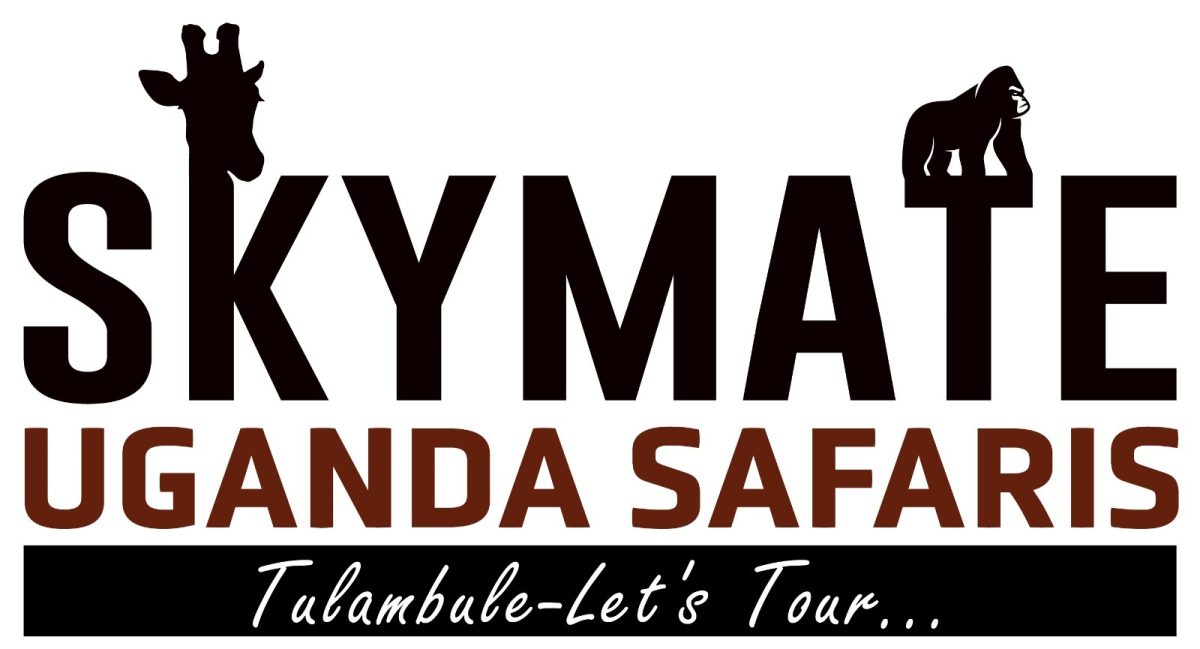Bwindi Impenetrable National Park is an undisputed highlight of a safari to Uganda. This popular Uganda national park covers an area of about 321km2. It protects a magnificent range of forested hills on the edge of the Albertine Rift Valley in the southwest of Uganda.
It was gazetted a national park in 1991 and declared a Natural World Heritage Site in 1994 on account of its exceptional biodiversity.
Bwindi National Park is home to over 120 mammal and 350 bird species. The main attraction of Bwindi is the opportunity to tack the wild gorillas on foot.
Bwindi is home to nearly 50% of the world’s population of mountain gorillas. That equates to around 500 individuals, according to the last official census of 2019, with 24 gorilla families currently habituated for tourism — more than in any other area of Africa.

Even if Bwindi Impenetrable National Park was not home to the Mountain Gorillas, its remoteness and enthralling natural beauty would attract visitors.
But it is those magnificent apes that have made Bwindi Impenetrable National Park Uganda’s most important tourist destination.
No other wildlife encounter can rival sitting with endangered gorillas in their natural habitat and observing the fascinating family dynamics of some of our closest cousins.
Safaris to Bwindi Impenetrable National Park
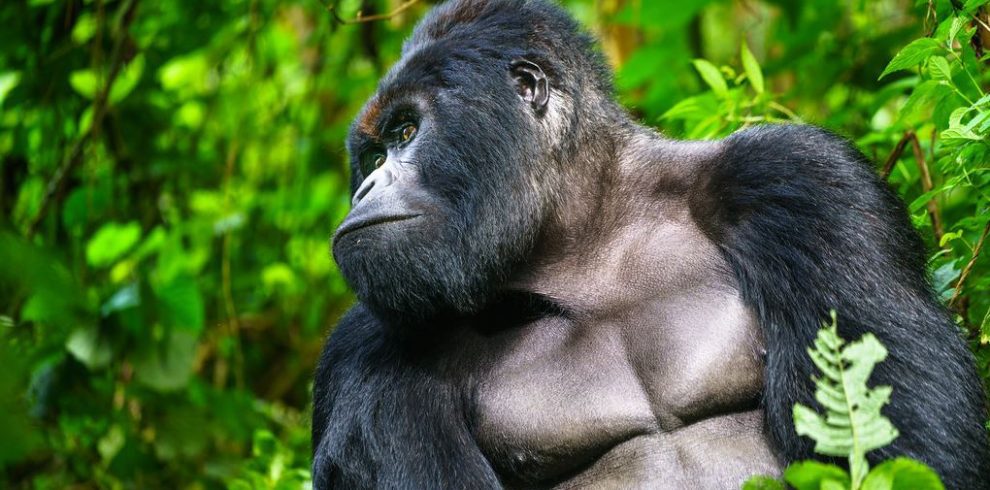
Affordable 3 Day Gorilla Trekking Uganda Safari tour

2 Day Gorilla Trekking Uganda Tour Via Kigali, Rwanda

7-Day Uganda Wildlife Safari | Chimps, Gorillas, Big 5 & More!
If you want to trek gorillas in Bwindi National Park, look no further. Our Bwindi gorilla tours range from short and focused gorilla treks to multi destination itineraries that include Uganda’s savannah parks as well as classic East African big game destinations like Serengeti and Masai Mara. Many of our suggested itineraries also take in chimpanzee tracking in Kibale Forest for the complete ‘Great Ape’ safari. Click here to see all our pre-packaged Uganda gorilla safari tours to Bwindi Impenetrable National Park or simply contact us for a tailor-made itinerary.
Gorilla Trekking in Bwindi Impenetrable National park

In Uganda’s Bwindi Impenetrable National Park, gorilla trekking can be organised for a fraction of what it costs in neighbouring Rwanda — making one of Africa’s greatest, and most expensive, wildlife experiences more accessible. A Uganda Gorilla trekking permit costs US$800 and a Rwanda gorilla trekking permit costs US$1,500.
Departing early in the morning after briefing, you embark on a guided trek into the forest in search of one of 24 habituated gorilla families in Bwindi National Park.
Visits are led by local park ranger guides and groups of 8 visitors are allowed to observe the gorillas for 1 hour, in silence and at a safe distance. It is relatively hard work to reach the gorillas. You should be prepared for round of walk of about 2 to 7 hours through a challenging terrain of steep ridges and valleys.
The appropriately named Bwindi Impenetrable Forest is only accessible by foot. There are no paths, no signs, no directions—and more often than not, no clearings (which is why the guides carry machetes). The good news, however, is that the reward more than outweigh the effort.
A DETAILED Gorilla Trekking Guide

Gorilla habituation experience
Gorillas are not always gentle in the presence of humans. It takes time and effort to achieve this relaxed attitude in a process known as habituation.
Bwindi Impenetrable National Park offers visitors a chance to take part in the gorilla habituation process by tracking a family of semi-habituated gorillas.
This opportunity costs $1,500 per person, but it is an intense and unforgettable experience, perfect for those really loves gorillas and also has an interest in the work that goes on behind the scenes.
The gorilla habituation experience in Bwindi is even more limited in number than gorilla treks. It allow just a handful of visitors a day to accompany a team of specialists for 4 hours as they track and engage with gorillas that are not yet fully used to the presence of humans.
GORILLA HABITUATION EXPERIENCE

The four Gorilla trekking Sectors of Bwindi
Habituated gorilla families in Bwindi Impenetrable National Park can be accessed from four sectors, name after the sorrounding villages.
These include Buhoma, Ruhija, Nkuringo and Rushaga. Each of these Bwindi sectors acts as a self-standing gorilla trekking destination, has its own set of accommodation options, gorilla families, level of difficulty and it is reached by a different approach from other locations.
1. Buhoma Sector (Northern Bwindi)
Buhoma is the most accessible and visited region of Bwindi Impenetrable National Park.
It is also the largest of the 4 gorilla trekking sectors of the park and has the highest density of luxury Bwindi safari lodges and camps.
As the first area of the park to open to guests, this is where Bwindi gorilla trekking tours first started, when the Mubare gorilla family was habituated to the presence of humans in 1993.
None of the original members of this family are still around — some died in fights or from natural causes, others joined other wild troops and disappeared into the forest — but their 9 descendants are some of the most playful.
In Buhoma Sector of Bwindi National Park, you can also explore the neighbouring communities on cultural tours, bird watch, or take a scenic hike on some of the most spectacular forest trails on the continent. And aside from Mubare Gorilla Family, there are 5 other habituated gorilla families including:
- Habinyanja Gorilla Family – 12 Members
- Rushegura Gorilla Family – 19 Members
- Katwe Gorilla Family – 9 Members
- Binyiindo Gorilla Family – 7 Members
- Muyambi Gorilla Family – 7 Members
2. Ruhija Sector (Eastern Bwindi)
Ruhija is second most visited sector of Bwindi. Ruhija sector is popular with bird watchers and avid hikers who for the summit of Rwamunyonyi Peak (“the hill of many birds”) – the park’s highest point which offers extraordinary views.
In this sector, you can also take a cultural tour to the surrounding areas to meet some Batwa pygmy people – the original inhabitants of Bwindi Impenetrable Forest.
On offer are demonstrations of the use of medicinal plants found in the forest and other ancient survival skills practiced by their people for thousands of years.
Though forest elephant sightings in Bwindi Impenetrable National Park are infrequent, Ruhija provide the best chance of spotting one of these elusive grey ghosts. Ruhija is home to 4 habituated gorilla families, including:
- Bitukura Gorilla Family – 13 Members
- Oruzogo Gorilla Family – 10 Members
- Kyaguliro Gorilla Family – 4 Members
- Mukiza Gorilla Family – 15 Members
3. Rushaga Sector (Southern Bwindi)
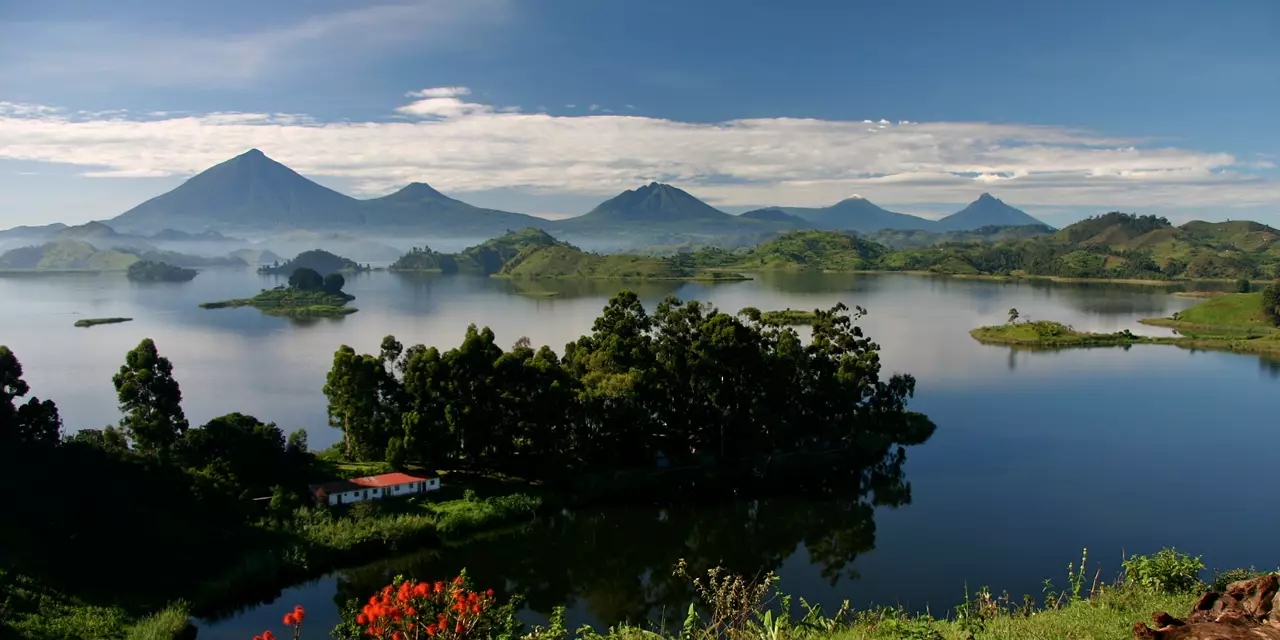
The Rushaga is famed for its gorilla trekking and the gorilla habituation experience – where tourists spend up to 4 hours with the group rather than the standard 1 hour. The sector also includes Lake Mutanda, so visitors can set out on a boat cruise for an entirely different perspective of the spectacular scenery.
It is home to multiple habituated gorilla families in the region, including:
- Shongi Gorilla Family – 11 Members
- Kahungye Gorilla Family – 25 Members
- Bweza Gorilla Family – 15 Members
- Busingye Gorilla Family – 10 Members
- Bikingi Gorilla Family – 12 Members
- Mishaya Gorilla Family – 9 Members
- Mishaya Gorilla Family – 9 Members
- Mishaya Gorilla Family – 9 Members
- Rwigi Gorilla Family
- Tindatine Gorilla Family
4. Nkuringo Sector (Western Bwindi)
The Nkuringo sector is the most scenic area to visit in Bwindi Impenetrable National Park. The dramatic topography and break-taking views of the volcanic Virunga Mountains do come at a physical cost; this particular region is better suited to more physically active visitors.
Nkuringo is home to four habituated gorilla families, including:
- Nkuringo Gorilla Family – 12 Members
- Bushaho Gorilla Family – 10 Members
- Christmas Gorilla Family – 9 Members
- Posho Gorilla Family
Bwindi Beyond the Mountain Gorillas
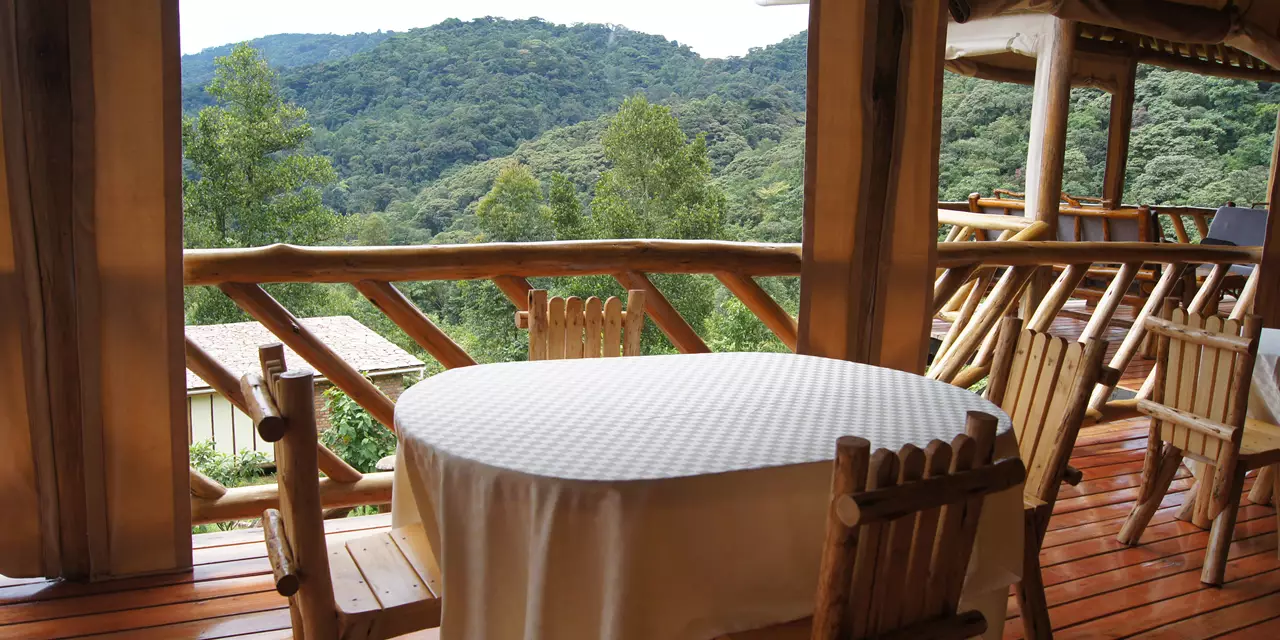
The mountain gorilla symbolizes Bwindi Impenetrable National Park, but it is not the whole story. The rich biodiversity, natural beauty and fascinating cultures found in and around Bwindi make it a wonderful place to visit.
While the average stay is only two or three nights and the prime reason to visit is to track the gorillas, there is much more to do, and a longer stay is worthwhile.
1. Bird Watching In Bwindi
Uganda is one of Africa’s the most exceptional birding destinations in and home to half of all of Africa’s bird species, with a count of about 1,097 species.
The Bwindi Impenetrable Forest National Park ecosystem alone offers a chance to spot 350 species, including 23 Albertine Rift endemics.
Bwindi is arguably the best forest birding spot in Africa. Short-tailed warblers, Chapin’s Flycatcher, Doherty’s Bushshrike, handsome francolin, Jameson’s antpecker, green tinkerbird and, of course, the spectacular Turacos are all rewards for a day’s birding in Bwindi Impenetrable National Park.
There may even have a chance to become the first person to take a photo of Shelley’s crimsonwing in the wild. As mentioned, Ruhija highlands offer particularly diverse birding, and here keen birders can search the Mubwindi Swamp trail for the mysterious African green broadbill (Grauer’s broadbill).
2. Forest Nature Walks in Bwindi
Bwindi Impenetrable National Park four sectors offer fantastic nature walks. Some of the most popular walks are done in Buhoma sector which 6 main hiking trails.
Nature walks in Bwindi offer a rewarding adventure that allows you to explore and discover Bwindi Impenetrable Forest.
You will set off from your lodge with an armed park ranger to protect you and guide you through the wealth of biodiversity that you will find every step of the way.
Expect to get up close and personal with a wealth of birds, primates, colourful orchids, majestic trees, epiphytic plants, shy ungulates, brightly coloured butterflies and enchanting waterfalls.
3. Meeting Bwindi’s Batwa people
During your safari at Bwindi, you can meet and learn about the Batwa people, their lifestyle, history, traditions and ancestral knowledge of Bwindi.
The original dwellers of this ancient jungle, the Batwa are known as “the Keepers of the Forest.” The Batwa have a long and rich history with the forest.
They previously survived off of the forest, hunting small game using arrows or nets and gathering a wealth of plants, berries and fruit.
The Batwa lived in huts constructed of leaves and branches, moving frequently in search of fresh supplies of food. The Batwa lived in harmony with the forest and its creatures, throughout Africa’s equatorial forests for 60,000 years or more.
In 1992, the lives of the Batwa changed forever.
When Bwindi Impenetrable Forest became a national park to protect the 350 endangered mountain gorillas within its boundaries, the Batwa were evicted from the park. They had no title to land, nor compensation.
The Batwa thus became conservation refugees in an unfamiliar, unforested world. Many Batwa died during the early years of exile, and the tribe’s very existence was severely threatened.
MORE ABOUT BATWA CULTURAL EXPERICE
4. Ride 4 A Woman Community Based Initiative
After meeting the gorillas in Buhoma, you can stay a few more days to spend time with the community. One of the most inspiring voices belongs to Evelyn Habasa, founder of NGO Ride 4 A Woman, a women’s group supported with the income from gorilla trekking.
The wheels of sewing machines are constantly whirring in her textiles workshop. Guests can learn how to weave a coaster from palm leaf fibers or take part in a cooking class, making local millet bread on a traditional three-stone fire.
Guesthouse rooms are decorated with bright, cheerful African fabrics.
Best Time To Visit Bwindi National Park?
You can visit Bwindi Impenetrable National Park at any time of the year.
People commonly come to Uganda for Bwindi gorilla trekking safaris, and sightings are pretty much guaranteed throughout the year.
However, June to August and December to February which are the dry season months offer the best condition gorilla trekking conditions. In the wet season months, the trails tend to be more slippery and harder to hike.
Getting there
You can get to Bwindi Impenetrable National Park by road or air. If you are planning a road trip to Bwindi, the journey takes approximately 8 to 9 hours from Kampala or Entebbe.
The drive to and from Kampala may be long but very interesting for those who are adventurous and love nature. Travelling by air is the fastest way to reach Bwindi, and there are a number of flights each day.
HOW TO GET TO BWINDI IMPENTRABLE
Lodges in Bwindi Impenetrable National Park
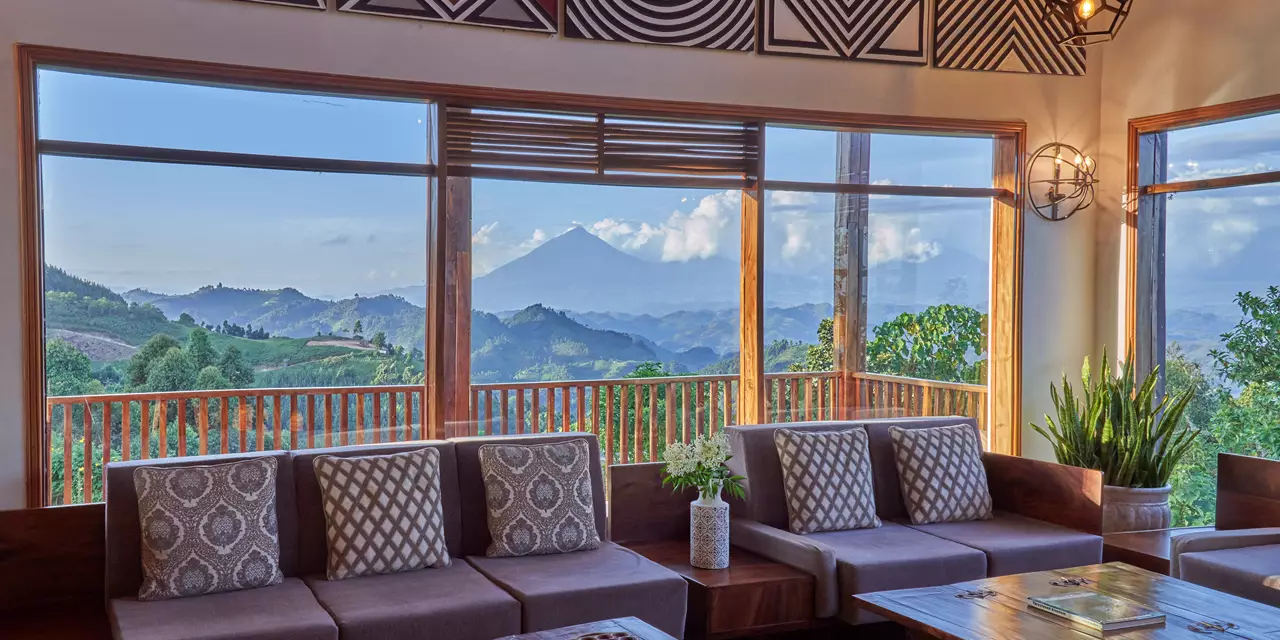
There are many Uganda safari lodges and camps in or near Bwindi Impenetrable National Park. When you are choosing where to stay in Bwindi, it is important to understand there are four different sectors in the park: Buhoma, Ruhija, Rushaga and Nkuringo as discussed above.
These four sectors act as destinations from which the trekking to different gorilla families commences. When booking a gorilla trekking permit for Bwindi, you book for a specific sector. It makes sense to select accommodation at the sector you will be departing from.
This is because the drive from one sector to another is long and the gorilla trek starts early in the morning. Keeping location in mind, there are many good lodges to choose from, including:
- Buhoma Lodge
- Sanctuary Gorilla Forest Camp
- Volcanoes Bwindi Lodge
- Mahogany Springs
- Clouds Mountain Gorilla Lodge
- Chameleon Hill Lodge
- Mutanda Lake Resort
- Gorilla Mist Camp
- Agandi-Uganda Eco-Lodge
- Ichumbi Gorilla Lodge
- Trekker’s Tarven Cottages
- Gorilla Conservation Camp
LODGES IN BWINDI NATIONAL PARK
FAQs About Bwindi Impenetrable National Park
1. Why Is Bwindi Called Impenetrable?
The name “Bwindi Impenetrable National Park” comes from the extensive stands of bamboo interspersed amongst the larger forest hardwoods. The bamboo and thick ground cover of ferns, vines, and other plant growth severely hinder direct access on foot.
2. What Does Bwindi Mean?
Legend has it that the park takes its name, “Bwindi,” from the term used for Mubwindi Swamp, “mubwindi bwa nyinamuraki,” which is found in the southeast sector of the park.
About 100 years ago, so the story goes, a family traveling from the Kisoro area was trying to cross a swamp that seemed impossible to traverse. After praying to the spirits of the swamp for guidance, they were asked to sacrifice their loveliest daughter in exchange for safe passage.
Faced with the prospect of returning to the south, the family opted to drown their beautiful daughter, Nyina Muraki, so that they could cross safely. As people learned about their sacrifice, they began to call it “mubwindi bwa nyinamuraki,” which translates as “dark place of nyina muraki.”
3. How many gorillas are in Bwindi National Park?
Bwindi Impenetrable National Park contains almost half of of the world’s population of endangered mountain gorillas. That equates to around 500 gorilla, according to the last official census of 2019, with 24 gorilla families currently habituated for tourism — more than in any other area that offer gorilla trekking in Africa.
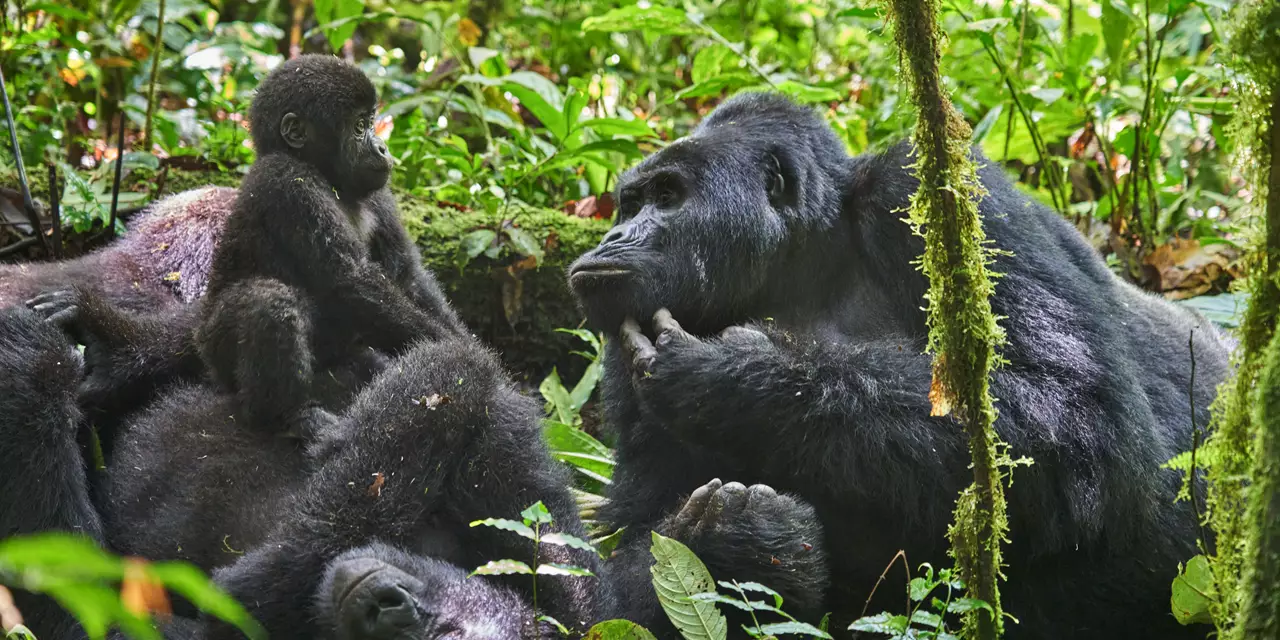
Ready To Start Planning Your Trip To Bwindi?
We hope you have found all information needed to decide that Bwindi Impenetrable National Park is the perfect place for your next safari adventure. Still have questions? Or maybe you would like some more specific information about the different lodges? Please contact us and we will get back to you.
